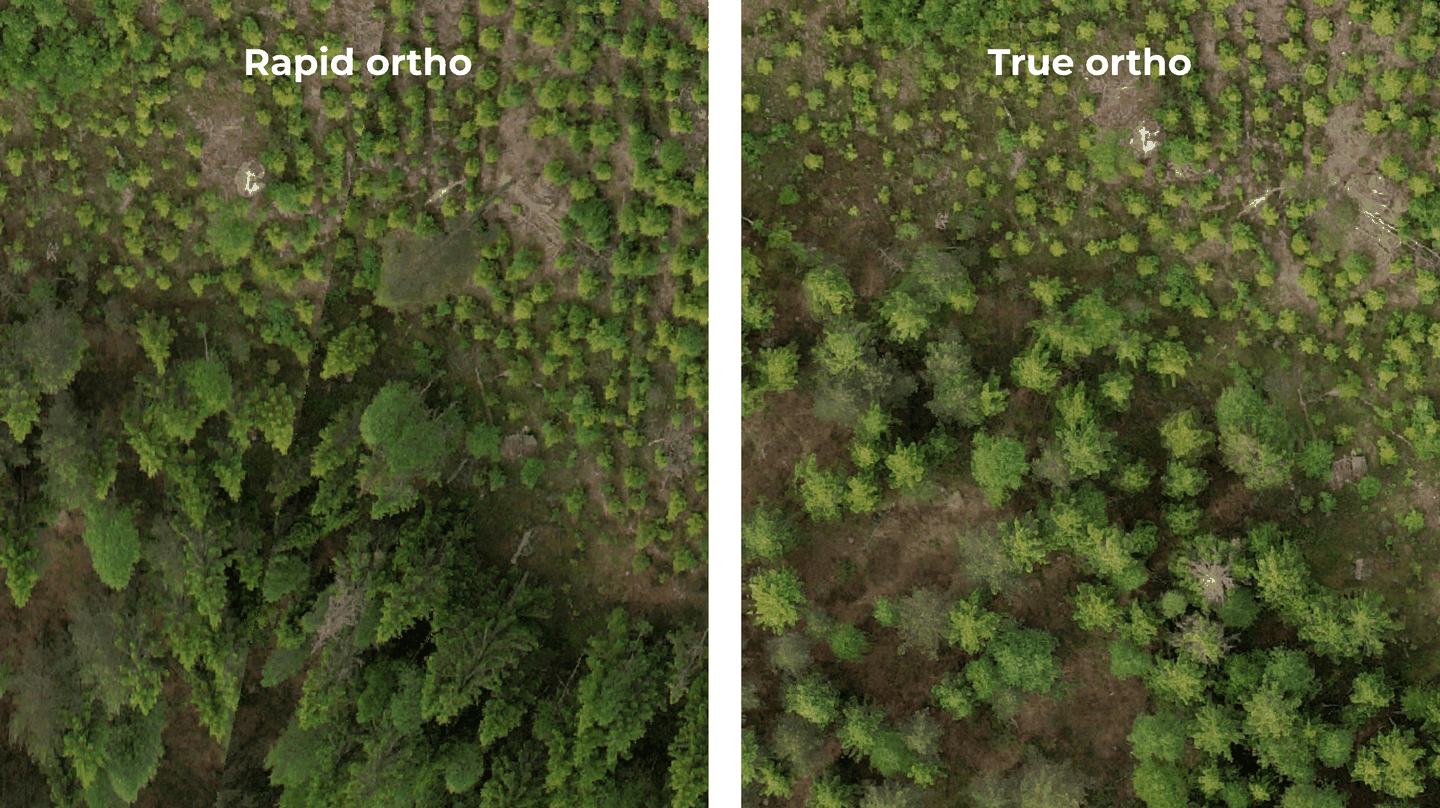
In modern forestry and urban tree management, the adage "garbage in, garbage out" has never been more relevant. The shift towards AI-powered analysis promises unprecedented efficiency and accuracy, but the foundation of any great analysis is exceptional data. While we can leverage various imagery sources, from satellites and airplanes to drones, it's the nuances in how this data is processed that truly unlock its analytical power. The choice of imagery and processing method isn't just a technical detail—it's a critical decision that impacts the speed, cost, and ultimately, the quality of insights you receive.
At Arboair, we harness the full spectrum of aerial imagery, including airplane and satellite data, to provide flexible and scalable solutions. However, high-resolution drone imagery offers a unique combination of detail and flexibility that is particularly powerful. Yet, even with drones, the processing technique used to stitch thousands of individual photos into a single map, or orthophoto, can lead to vastly different outcomes. Let’s explore the two primary methods we employ: the "Rapid Ortho" and the "True Ortho."
Imagine you need to quickly assess a vast forest for storm damage or bark beetle infestations. Your priority is not a beautiful map for a brochure, but razor-sharp analytical clarity over a massive area, delivered quickly and cost-effectively. This is the perfect scenario for our Rapid Ortho method.
Generated using Arboair’s proprietary stitching algorithm, the Rapid Ortho is purpose-built for AI analysis. Our algorithm is designed to produce the sharpest possible images of individual trees, which is paramount for our analytical models. By optimizing for analytical quality, we can fly with less image overlap, enabling us to cover areas up to ten times faster than conventional mapping flights. This translates directly into significant time and cost savings for our clients. The resulting map is a tool of pure function; while it may not be perfectly seamless from a visual standpoint and can have a GPS error of a few meters, the clarity of each tree is unparalleled. Think of it as a raw, functional blueprint—every crucial detail is crystal clear, enabling precise and reliable analysis across expansive landscapes.
Now, consider a different situation. You might be a city planner developing a detailed public-facing plan for a new park or an arborist needing a precise elevation model to assess risk near infrastructure. Here, visual appeal and absolute positional accuracy are key. For this, we use the True Ortho method.
We create True Orthos using state-of-the-art photogrammetry software like DJI Terra. This process meticulously corrects for perspective distortions and elevation, resulting in a visually stunning, geographically precise map that looks like a single, seamless photograph from directly above. A significant advantage of this method is the generation of highly accurate, updated digital elevation models (DEMs) and digital surface models (DSMs), which are invaluable for many planning applications. However, this beauty comes at a cost. The process is slower, covers smaller areas, and the very act of creating a visually perfect image can sometimes introduce subtle artifacts—smearing or distorting tree crowns—that can slightly degrade the quality of an AI-driven analysis. While it’s an incredibly valuable tool, its focus is on visual and positional perfection rather than the pure, unadulterated clarity needed for the most demanding AI analysis.
So why does this distinction matter so much? Because our AI models thrive on clarity. A slightly distorted tree crown on a visually perfect True Ortho can be more confusing to an AI than a crystal-clear tree on a Rapid Ortho that is a few meters from its absolute GPS location. For our system, identifying the tree's characteristics—its species, health, and size—is the primary goal.
Our philosophy is to always choose the right tool for the job. We don’t believe in a one-size-fits-all approach. By understanding your unique goals, we can tailor a data capture and analysis strategy that delivers the most value. If you need to analyze hundreds or thousands of hectares with maximum efficiency for forest health or inventory, the Rapid Ortho is the clear winner. If your project demands a visually perfect map and a detailed elevation model for urban planning, the True Ortho is the ideal solution.
This expertise in selecting and processing the right kind of data is what allows Arboair to deliver on its promise: providing the most precise, reliable, and cost-effective tree data to drive sustainable and efficient management decisions.
Curious to learn which imagery solution would best serve your project? Contact us today to start the conversation.